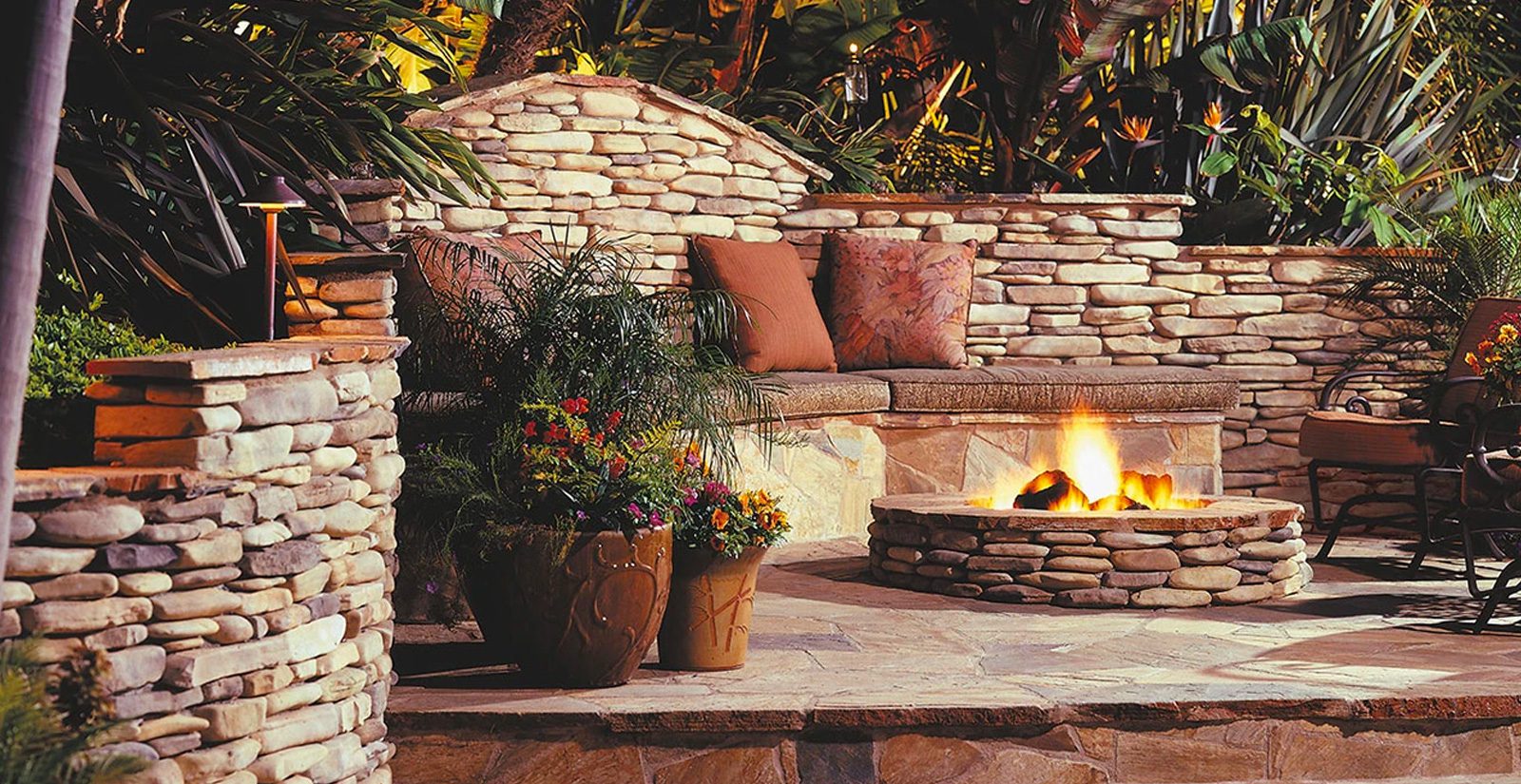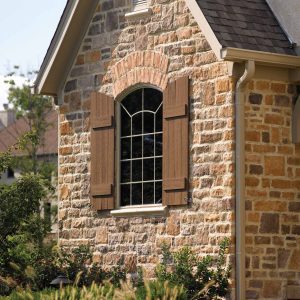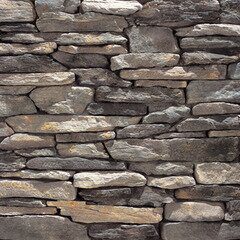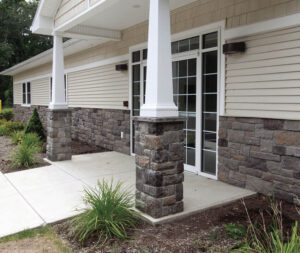
UNDERSTANDING THE IMPACT OF STONE VENEER

Stone veneer is the art of capturing the essence of natural stone and transferring it to walls, fireplaces, facades, and more. Its significance lies in its ability to mimic the look and feel of natural stone while being more cost-effective and versatile. Unlike traditional stone, veneer offers a lightweight option that’s easier to install without compromising on the aesthetics. This makes it an ideal choice for a wide range of projects, from small interior enhancements to grand outdoor hardscaping ventures.
What is the difference between stone veneer and stacked stone?
Stone veneer refers to the thin layer of stone that is adhered to a surface, while stacked stone is a particular style of veneer installation where stones are stacked in a linear pattern to create a textured, three-dimensional look.
IDENTIFYING PROJECT REQUIREMENTS
Before diving into stone veneer options, it’s crucial to understand the requirements of the project. Factors such as the location of the project (interior or exterior), the desired style (traditional, modern, rustic), and the existing architectural features should all be considered. By identifying these aspects, retail store owners and associates can narrow down their choices and find a stone veneer that perfectly aligns with the project’s vision.
Is stone veneer cheaper than real stone?
Yes, stone veneer is generally more cost-effective than using traditional full-sized stones. It offers the same aesthetic appeal at a fraction of the cost due to its lightweight and thinner nature. However, without an experienced touch — or the help of an expert hardscaping team — there are potential issues with using veneer over real stone that can lead to more expenses in the future.
EXPLORING VENEER TYPES AND STYLES
Stone veneer comes in various types and styles, each offering a unique visual impact. Thin veneer and full veneer are two common types, with thin veneer being lightweight and suitable for both interior and exterior applications. Styles such as stacked stone, ledgestone, and fieldstone provide diverse textures that cater to different design preferences. Retailers and associates can showcase these options to clients to help them envision the final look of their project.
Color Considerations

Choosing the right color palette is a crucial step in the veneer selection process. The color of the stone can significantly influence the mood and ambiance of a space. Earthy tones might evoke warmth and coziness, such as the Country Rubble line from Eldorado Stone. On the other hand, grays and whites can provide a modern and sleek appearance, such as the Marble Veneer line of Stoneworks hardscaping material. It’s essential to consider the existing color scheme and architectural features of the space when making this decision.
Matching the Veneer with Existing Elements
Harmonizing stone veneer with existing elements is an art that requires a keen eye for design. The veneer should complement the overall style of the space and blend seamlessly with other materials like wood, metal, or glass. Whether it’s integrating the veneer with a fireplace, accentuating a wall, or enhancing an outdoor landscape, thoughtful consideration should be given to achieving visual coherence.
STONE VENEER INSTALLATION TECHNIQUES AND CHALLENGES
Installing stone veneers is an intricate process that demands precision and a thorough understanding of the chosen veneer type. Different veneer types, such as thin veneer and full veneer, may require slightly different approaches, but certain fundamental techniques remain consistent across the board.
Adequate Surface Preparation
Before applying any stone veneer, preparing the surface is key to ensuring a durable and lasting installation. The surface must be clean, dry, and free of debris. If the installation is on an exterior wall, it’s crucial to address any issues related to moisture, as excess moisture can compromise the veneer’s adhesion over time. For interior applications, ensuring a smooth and even substrate is essential. For example, If you’re working on an outdoor fireplace project, the surface behind the veneer needs to be properly waterproofed to prevent water from seeping through and causing damage.
Proper Mortar Application
The type and application of mortar play a vital role in the success of the installation. Using a high-quality mortar that is appropriate for the specific veneer type is essential. Applying mortar evenly and at the right thickness helps achieve a strong bond between the veneer and the substrate. When installing thin stone veneer panels, for example, a polymer-modified mortar is often recommended due to its flexibility and adherence properties.
Attention to Detail
Detail-oriented installation is crucial for creating a polished and cohesive appearance. Ensuring that the stones are laid out evenly and aligned with the intended pattern or design is essential. Taking the time to carefully place each stone and make adjustments as needed can make a significant difference in the final result. Pay close attention to the alignment of each piece to maintain the desired linear pattern and prevent an uneven or disjointed look.
Remember that there’s nothing wrong with getting some help from an expert if you’re worried about messing up the small details.
WHAT ARE THE DISADVANTAGES OF STONE VENEER SIDING?

Stone veneer siding, while offering numerous benefits, can have some downsides. These include potential issues with adhesion and moisture intrusion if not properly installed and the need for occasional maintenance to ensure the veneer’s longevity.
Proper Adhesion
Achieving strong adhesion between the stone veneer and the surface requires meticulous surface preparation and mortar application. When working on a concrete wall, applying a bonding agent before mortar application can improve the bond between the veneer and the wall. Using a bonding agent can enhance adhesion, especially on challenging surfaces.
Managing Corners and Edges
Corners and edges demand special attention during installation to ensure a seamless transition between surfaces. Properly mitering corners and using corner pieces specifically designed for stone veneer help maintain a polished appearance. For instance, outdoor kitchen projects with stone veneer countertops look best when using specially designed corner pieces— this ensures that the corners have a smooth, natural-looking finish.
Maintaining and Caring for Stone Veneer
To keep the stone veneer looking its best, proper maintenance is essential. Regular cleaning with a mild detergent and water helps prevent dirt buildup. Applying a sealant can protect the veneer from the elements and enhance its durability. In case of damage or wear, addressing issues promptly can prevent further deterioration and extend the life of the veneer.
With the knowledge gained from this guide, you can enhance the beauty and value of any space through the artful use of stone veneer. Whether it’s a charming interior accent or a striking outdoor hardscaping project, the right stone veneer can truly transform spaces into timeless works of art.
 a
a